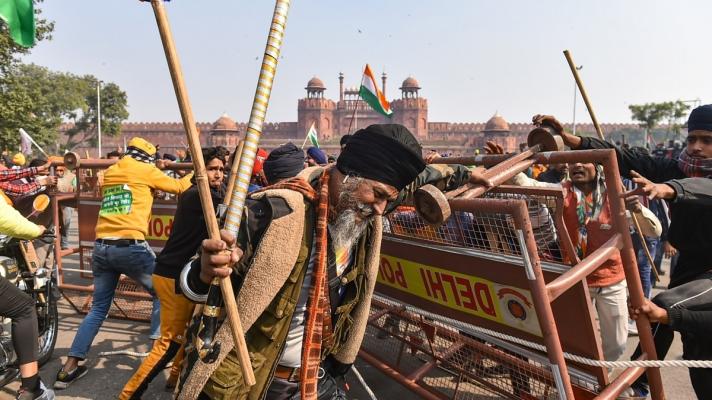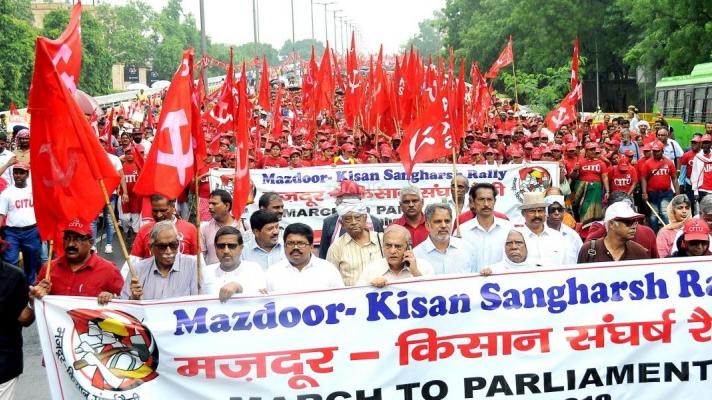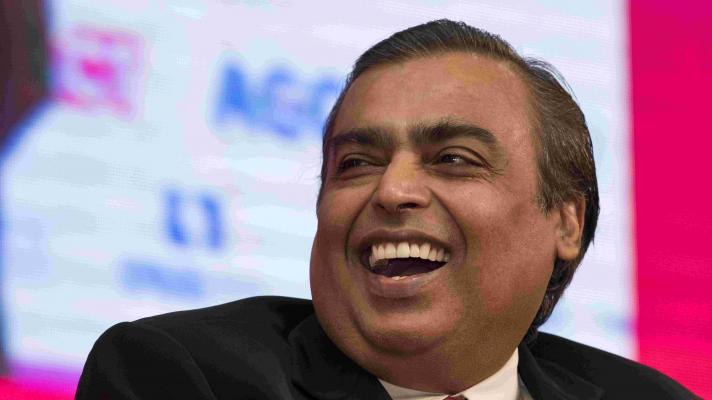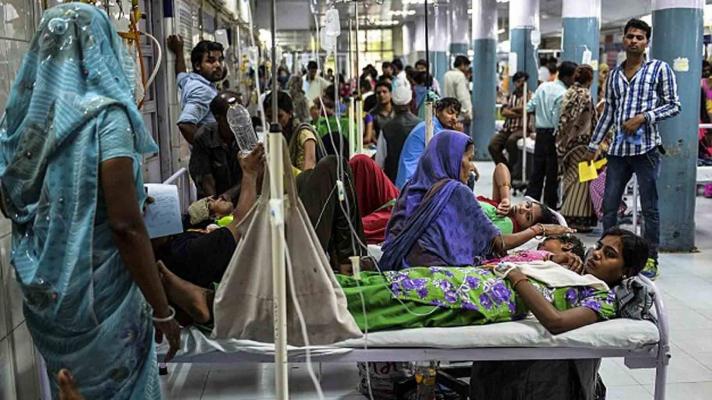India, a country considered a subcontinent, has been impacted by the neoliberal wave sweeping the world. As in too many cases, this economic system has not produced any honorable results when compounded by the second wave of the global pandemic of covid-19.
In a race towards development, India has privatized and industrialized but also sold a good part of its vital patrimony to the transnational market, unleashing a structural conflict that has brought to light with greater force and drama many scourges. One of them is inequality as a continuation of colonization and the caste system that prevails in their society, from which some publications say that the British Empire extracted wealth equivalent to almost 37 million billion euros.
Its independence from that empire brought the establishment of a “secular” republic and a constitution that sought to respect and promote co-existence in a plural country in which 85% of the population professes Hinduism, 14% Islam, 2.5% Christianity and 2% Sikhism. This was necessary after the partition in 1947, which resulted in the formation of Pakistan and created “one of the largest migrations in the history of mankind”, causing the uprooting of 35 million people and the death of between 1 and 2 million.
As the country with the largest agricultural and livestock area in the world, followed by China and the United States, its agriculture is divided into three sectors: food, cash and plantation crops. A large part of its cash and plantation crops are destined for export and are key to both the global food supply and the world economy.
Cash crops include sugar cane (largely used for bioethanol, as fuel), tobacco, cotton and oil seeds, such as peanuts, rapeseed and mustard, while plantation crops include tea, coffee, coconut and rubber.
Agricultural protests intensify
More than 60% of India’s nearly 1.4 billion inhabitants depend (directly or indirectly) on agriculture for their livelihood. The renowned journalist Palagummi Sainath states that what is happening in an agrarian-based society like India can be described as a crisis of civilizational proportions, explained by the hijacking of agriculture by corporations through the predatory commercialization of the countryside.
The symptoms are not only evident in the macroscopic tragedy caused today by covid-19, but have been evident for years through farmer suicides, child malnutrition, increasing unemployment, growth of both the informal economy and indebtedness, and a total collapse of agriculture.
India overcame famine through the Green Revolution of the 1960s by increasing production based on intensive use of fertilizers and pesticides. A series of regulations on the marketing of these crops also led to an exponential increase in the activity until the 1990s, when it accounted for a third of the Gross Domestic Product (GDP), but today it only represents around 15% of the country’s economy.
Prime Minister Narendra Modi’s intention was to push through a series of reforms to agricultural legislation that would end up giving large corporations greater control over the labor and agricultural markets, with far-reaching consequences for commodity prices, the financial structure, wages, public health and the environment. Opponents say that total power will be concentrated in the hands of a few companies and will leave the majority of rural people and workers in general in an unimaginable situation of helplessness.
Opposition to this eventual scenario produced agrarian mobilizations opposing three laws passed in September 2020, unions organized local protests and in November initiated the Dilli Chalo (‘Let’s go to Delhi’) movement in which hundreds of thousands marched to the nation’s capital and clashed with security forces. The laws are as follows:
- APMC (Agricultural Produce Market Committee) Nullification Act: This Act allows for the first time the trade of agricultural products outside the mandis (markets) regulated by the APMC, and enables the proliferation of private mandis throughout the country, which could control prices and then the market. However, mandis are currently run by committees composed of farmers, often large landowners, and traders or “commission agents” who act as middlemen to negotiate sales, arrange storage and transportation, and even finance deals.
- Contract Farming Law: This is a legislative framework that favors an agreement between the farmer and the buyer prior to planting at a predetermined price. Experience shows that this practice increases indebtedness and thus entrenches patterns of inequality such as loss of land and concentration of ownership.
- Food Hoarding (Freedom for Business) Act: Seeks to eliminate arbitrary and periodic limits on agricultural commodity stocks imposed by the government on traders. The new law introduces price triggers to be used only in exceptional circumstances. Until now, stock limits can be imposed only when prices of perishable products increase by more than 100% and non-perishable products by more than 50%. These limits were violated 69 times in the last 10 years.
According to the record kept by Anuroop Kaur Sandhu, a professor at the University of Delhi, the unfortunate balance until last January was the death of 157 people linked to the protests due to accidents, suicides and illnesses contracted as a result of their permanence in the mobilizations.
There are many imbalances in the current system, but the fact that for every cup of coffee sold at 250 rupees in coffee shops, farmers receive only 1 rupee is an eloquent example of asymmetry. The wave of bankruptcies in thousands of small enterprises has driven thousands of Kisans (small and medium agricultural producers) to suicide. Many of them are indebted by local moneylenders who, in coordination with mafias, take their land.
Be like Kisan - fight for your lives & livelihoods.#FarmersDealTotalRepeal pic.twitter.com/RArp2nt8KP
— Son of the Soil #FarmersProtest (@dhartideputt) January 4, 2021
Data reported by journalist Colin Todhunter from his analysis on the Accidental Deaths and Suicides in India (ADSI) report, over the last 20 years, approximately about 300,000 farmers have committed suicide and the rate in 2019 adjusted to 28 agriculture-dependent people per day, which represented 7.4% of the national total. During 2019, the latest data consigned, about 10 thousand 281 people in the agricultural sector committed suicide, of the national total close to 140 thousand. The number of suicides of Kisans in 2019 was lower than that of 2018, which had reached 10 thousand 348.
In Tamil Nadu, one of India’s poorest states, Kisans erected a pyramid with the skulls and bones of farmers who had committed suicide after the worst drought in 140 years. This happened in 2018 in the vicinity of the parliament.
Over-accumulation of elites and induced dependency.
An elite has emerged in recent years from the state of Gujarat led by Mukesh Ambani and Gautam Adani, India’s first and second richest people, respectively. Adani has increased his wealth by 230% (over $26 billion) since 2014 and owns companies in mining, gas, ports, airports and in the agri-food sector.
Mukesh Ambani is India’s richest man and owner of Reliance Industries, a company specialized in gasoline, retail and telecommunications; he doubled his wealth between March and October 2020. He now has $78.3 billion. The average increase in Ambani’s wealth in just over four days amounted to more than the combined annual salary of the 195,000 people employed by Reliance Industries.
The most recent report by the NGO Oxfam states that in India, confinement caused the wealth of the country’s billionaires to increase by approximately 35%, while 84% of households suffered loss of income in different measures. In April 2020 alone, some 170,000 people lost their jobs every hour.
The report added that with the increase in income of India’s top 100 billionaires since March 2020, each of the 138 million poorest people could have been given a check of 94,045 rupees. The report added: “[…] it would take an unskilled worker 10,000 years to earn what Ambani earned in one hour during the pandemic […] and three years to earn what Ambani earned in one second.”
On the other hand, NGO Grain notes that Indian global companies are also colonizing the retail space through online retailing. Walmart entered India in 2016 after buying internet retail startup Jet.com for $3.3 billion, and then in 2018 was bought India’s largest internet retail platform Flipkart for $16 billion.
Today Walmart and Amazon control nearly two-thirds of India’s digital retail sector using predatory pricing, heavy discounting and other unfair business practices to lure clientele to their online platforms. According to Grain, when these two companies generated sales worth more than $3 billion in just six days during a sales offensive on the occasion of the Diwali festival, India’s small retailers issued a desperate call for a boycott of online shopping.
In 2020 Facebook and U.S. private equity fund KKR pledged to invest more than $7 billion in Reliance Jio, the digital store of one of India’s largest retail chains. The clientele will soon be able to shop at Reliance Jio via the Facebook chat app and WhatsApp and will succeed in eradicating millions of small traders and corner stores.
Colin Todhunter says that, in the case of agriculture, something similar is happening because foreign agri-capital is pressuring India to eliminate its meager (compared to richer nations) agricultural subsidies. The public distribution system and the publicly owned security reserves are an obstacle to the profit-driven needs of global agribusiness interests that are demanding that the country become dependent on imports (and alleviate the problem of overproduction that Western agricultural capital has, i.e. its vast stocks of grain that it already sends to the Global South) and restructure its own agriculture to focus on those crops (fruits, vegetables) demanded by consumers in the richer countries.
India would then have foreign exchange reserves and buy food stocks from world traders but would not gain food sovereignty.
The pandemic as a symptom of the tragedy
The exponential increase in the number of cases of covid has revealed the cracks in the public health system in several of its components, but the most serious of these lies in the vaccination program, whose deficiencies have been unexpected.
The limitation caused by the hoarding of vaccines by rich countries and the limits to domestic production established by the TRIPS agreement (Trade-Related Aspects of Intellectual Property Rights) of the World Trade Organization (WTO) have been threats to a more effective progress in this program, but it seems that they do not justify some mistakes.
The world’s largest producer of vaccines is India, long considered the “pharmacy of the world,” which has several other companies capable of producing vaccines and has been adept at reverse-engineering a number of generic drugs. Sixty percent of the vaccines used in the “developing” world for childhood immunization came out of that country and 90% of the WHO’s use of measles vaccine.
In addition, its tradition of successful vaccination campaigns against polio and tuberculosis for children is well known, which may have mobilized the available infrastructure for urban and rural inoculation.
Last January, the government approved the use of the candidate vaccines Covishield (Oxford-AstraZeneca), produced in India by the Serum Institute, and Covaxin, produced by Bharat Biotech under manufacturing license from the Indian Council of Medical Research (ICMR), but no permits were granted to other producers to increase supply.
The vaccination program officially kicked off on the 16th of that month with two goals:
- Cover 30 million health and essential workers by the end of March.
- Cover 250 million people by July.
As of April 17, only 37% of essential workers had received both doses (of each vaccine) and an additional 30% had received only the first dose.
That reduced figure could have resulted from concerns over the rapid regulatory approval granted to Covaxin, which had not completed Phase III trials. The Indian government also encouraged exports, in part to increase its geopolitical positioning by fulfilling the Indian Serum Institute’s commitments to AstraZeneca and COVAX’s global service.
As the vaccines were delivered at different age intervals they became scarce and the pace slowed to the point where, by April 24, only 8.5% of the population had received even one dose. Another pertinent fact is that the vaccine was allowed to be administered by private services at a price of 250 rupees (about 2.76 euros) per dose.
It would have taken both producers three years to meet the required demand and the US export ban on some essential ingredients has further affected AstraZeneca’s production, limiting Bharat Biotech’s capacity.
The lack of compulsory licenses to other producers to increase supply was due to several public sector manufacturing units not possessing adequate investment. On April 16, in the midst of the obvious emergency, three public companies were allowed to manufacture the vaccine, leaving out three other public units, with greater experienced knowledge and capacity.
In 2018, investment in health represented 3.5% of GDP, a figure that has not changed in decades while health spending per capita, by purchasing power parity, was $275.13, around the figures for Myanmar or Sierra Leone.
By the end of 2020 it had 0.8 doctors and 1.7 nurses per 1,000 population and 5.3 beds per 10,000, while China, for example, has 43.1 beds for the same number of people. India has only 2.3 intensive care beds per 100 thousand people (compared to 3.6 in China) and 48 thousand ventilators (China had 70 thousand ventilators in Wuhan alone).
Vaccines for covid-19 are not available to the Indian population at the rate needed, and will not be available before November 2022, a new government policy will allow vaccine manufacturers to raise prices, but not produce fast enough to meet needs (and India’s public sector vaccine factories are at a standstill). There is also not enough medical oxygen, and promises to build capacity have fallen short.
Private sector hospitals run their system on the principle of maximum capacity and have no capacity to manage loads that exceed them, as optimization theory does not allow the system to cope with this emergency, and in normal times would mean that hospitals would have excess capacity.
No private sector is going to voluntarily develop a surplus of beds or ventilators. This is what inevitably provokes crisis during a pandemic in neoliberal economies.
There is no evidence that the B.1.617.2 variant, called the “Indian variant”, is causing more severe disease but its transmissibility is greater, which explains why the number of infections is increasing much faster. Although in recent days registered cases have fallen below 300,000 for the first time in almost a month, the daily number of deaths is still more than 4,000 and the sanitary collapse remains.
UK Health Secretary Matt Hancock said that “new and very early data” from Oxford University gives “a degree of confidence” that vaccines will work against this version of SARS-CoV-1, other Oxford scientists have explained that “it will be susceptible to the vaccine in the same way as others”.
On the other hand, climate change has exacerbated the crisis in the Indian subcontinent with extreme droughts threatening tea plantations and cyclone Tauktae that has left at least 24 dead and 96 missing when it swept through the west of the country, leaving the coastline submerged and turning streets into rivers and forcing hundreds of thousands of people to flee.
The executive director of the United Nations Children’s Fund (UNICEF), Henrietta Fore, has stated that “while the situation in India is tragic, it is not unique,” recalling that the institution has warned several times about the risks of letting down our guard and leaving low- and middle-income countries without equitable access to vaccines, diagnostics and therapy. If these warnings are not heeded, cases occur when the health system explodes, unable to care for all the sick, as in Nepal, Sri Lanka and the Maldives, and also, further away from India, in Argentina and Brazil.
On the other hand, climate change has exacerbated the crisis in the Indian subcontinent with extreme droughts threatening tea plantations and cyclone Tauktae which has left at least 24 dead and 96 missing when it swept through the west of the country, leaving the coastline submerged and turning streets into rivers and forcing hundreds of thousands of people to flee.
The executive director of the United Nations Children’s Fund (UNICEF), Henrietta Fore, has stated that “while the situation in India is tragic, it is not unique,” recalling that the institution has warned several times about the risks of letting down our guard and leaving low- and middle-income countries without equitable access to vaccines, diagnostics and therapy. If these warnings are not heeded, cases occur when the health system explodes, unable to care for all the sick, as in Nepal, Sri Lanka and the Maldives, and also, further away from India, in Argentina and Brazil.
On the other hand, India’s chief scientific advisor, K Vijay Raghavan, warned last Wednesday that even after infection rates decline, the country should be prepared for a third wave given the high levels of circulating virus.
**
In times of global pandemic, the neoliberal drift, a continuation of a colonial system, continues to test emerging countries that will have to confront their internal contradictions in order to reformulate their role in the world. The case of India, beyond the subjects and actors, is a clear example of the price to be paid when the interests of capital determine the future of the majorities.
Translated by Internationalist 360°



